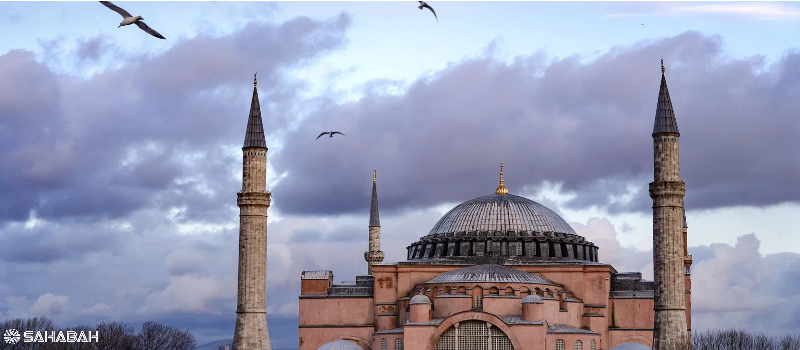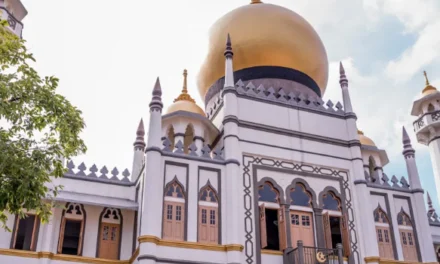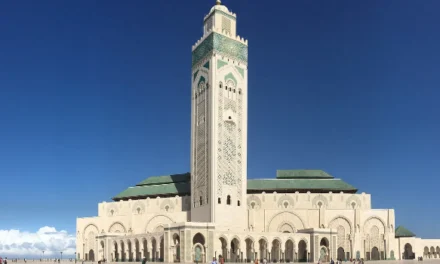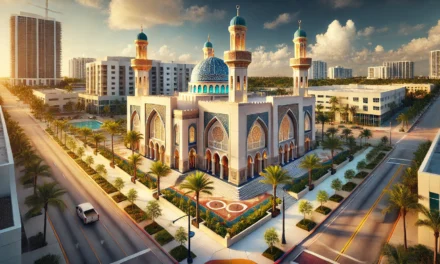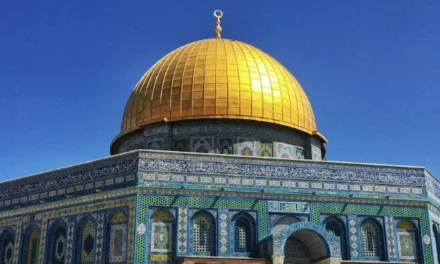The Hagia Sophia, or Sofia Mosque Istanbul, stands as a testament to the rich tapestry of history that defines Istanbul. This architectural marvel has witnessed the ebb and flow of empires, religions, and cultures, making it one of the most significant landmarks not just in Turkey, but in the world. From its origins as a Byzantine cathedral to its current status as the Hagia Sophia Grand Mosque, this structure has been at the heart of Istanbul’s identity for nearly 1,500 years.

The Byzantine Beginnings of Hagia Sophia
From Cathedral to Mosque: A Historical Odyssey
The story of Hagia Sophia begins in the 6th century AD, during the reign of Byzantine Emperor Justinian I. Completed in 537 AD, the Hagia Sophia was originally constructed as a Christian cathedral, serving as the centerpiece of the Byzantine Empire’s religious life. Its name, “Hagia Sophia,” translates to “Holy Wisdom” in Greek, reflecting its spiritual significance.
Key Facts:
- Construction began: 532 AD
- Completed: 537 AD
- Original purpose: Eastern Orthodox cathedral
- Architects: Anthemius of Tralles and Isidore of Miletus
The Hagia Sophia’s journey from cathedral to mosque began with the fall of Constantinople to the Ottoman Empire in 1453. Sultan Mehmet II, also known as Mehmet the Conqueror, was awestruck by the building’s beauty and immediately converted it into a mosque. This marked the beginning of the Hagia Sophia’s life as a Muslim place of worship, a role it would maintain for nearly 500 years.
Architectural Brilliance: Where East Meets West
The Hagia Sophia’s architecture is a stunning blend of Byzantine and Islamic influences, making it unique in the history of architecture. Its most striking feature is its massive central dome, which seems to float on a ring of windows, creating an illusion of weightlessness.
Notable Architectural Elements:
- Central dome: 55.6 meters high, 31.87 meters in diameter
- Four minarets: Added during the Ottoman period
- Buttresses: Reinforced over centuries to support the dome
- Marble columns: Sourced from across the Byzantine Empire
- Mosaics: Blend of Christian imagery and Islamic calligraphy
“The Hagia Sophia is the finest example of Byzantine architecture. Its spacious nave covered by a lofty central dome and semi-domes, has been a marvel for centuries.” – Lord Kinross, historian
The Ottoman Era: Hagia Sophia as a Mosque
Islamic Transformations and Additions
When the Hagia Sophia became a mosque in 1453, it underwent several modifications to suit Islamic worship practices. The most visible changes were the addition of minarets, the covering of Christian mosaics, and the installation of massive roundels bearing the names of Allah, Prophet Muhammad (pbuh), and the early caliphs.
Islamic Additions to Hagia Sophia:
- Four minarets
- Mihrab (prayer niche indicating the direction of Mecca)
- Minbar (pulpit for sermons)
- Sultan’s loge
- Massive chandeliers
A Center of Islamic Learning and Culture
During the Ottoman period, the Hagia Sophia Mosque became not just a place of worship but also a center of Islamic culture and education. It housed a madrasa (Islamic school) and became a model for Ottoman mosque architecture, influencing the design of iconic structures like the Blue Mosque and the Süleymaniye Mosque.
Hagia Sophia in the Modern Era
From Mosque to Museum and Back Again
In 1934, under the leadership of Mustafa Kemal Atatürk, the founder of the Turkish Republic, the Hagia Sophia was secularized and turned into a museum. This decision was part of Atatürk’s broader reforms to modernize Turkey. For 86 years, the Hagia Sophia served as a museum, attracting millions of visitors from around the world.
However, in July 2020, the Turkish government, under President Recep Tayyip Erdoğan, made the controversial decision to reconvert the Hagia Sophia into a mosque. This move sparked international debate about the site’s status and its significance to different religious and cultural groups.
Timeline of Recent Changes:
- 1934: Converted to a museum
- 1985: Designated as a UNESCO World Heritage Site
- July 10, 2020: Decision to reconvert to a mosque
- July 24, 2020: First Friday prayers held in 86 years
Balancing Religious Use and Historical Preservation
The current status of Hagia Sophia as a working mosque presents unique challenges in terms of preserving its historical and artistic elements while accommodating its use as a place of worship. Efforts are being made to protect the ancient Christian mosaics and other historical features while making the space suitable for Islamic prayer.

Visitor’s Guide to Hagia Sophia Grand Mosque
Planning Your Visit
Location and Access
- Address: Sultan Ahmet, Ayasofya Meydanı No:1, 34122 Fatih/İstanbul, Turkey
- Nearest Metro Station: Sultanahmet (10-minute walk)
Opening Hours
| Day | Hours |
|---|---|
| Monday | 9:00 AM – 5:00 PM |
| Tuesday | 9:00 AM – 5:00 PM |
| Wednesday | 9:00 AM – 5:00 PM |
| Thursday | 9:00 AM – 5:00 PM |
| Friday | 9:00 AM – 5:00 PM |
| Saturday | 9:00 AM – 5:00 PM |
| Sunday | 9:00 AM – 5:00 PM |
Note: Hours may vary during Ramadan and other Islamic holidays
Entrance Fees
- Turkish citizens: Free
- Foreign visitors: Free (as of 2024, subject to change)
What to Expect
Dress Code
- Modest dress required
- Women: Head covering (scarves available at entrance)
- Men and women: Knees and shoulders must be covered
Etiquette
- Remove shoes before entering prayer areas
- Speak quietly and respectfully
- Photography allowed in most areas (no flash)
- Avoid disturbing worshippers during prayer times
Key Features to Observe
- Central Dome
- Byzantine Mosaics (upper gallery)
- Islamic Calligraphy
- Mihrab and Minbar
- Sultan’s Loge
Tips for an Enriching Visit
- Visit early morning or late afternoon to avoid crowds
- Consider hiring a guide for historical context
- Allow 1-2 hours for a thorough visit
- Combine with visits to nearby Blue Mosque and Topkapi Palace
The Artistic and Cultural Legacy of Hagia Sophia
Mosaics: A Window into Byzantine Art
The mosaics of Hagia Sophia are among the most precious examples of Byzantine art in existence. These intricate works, many of which date back to the 9th and 10th centuries, depict religious figures, emperors, and abstract patterns.
Notable Mosaics in Hagia Sophia:
- The Deësis mosaic: Christ flanked by the Virgin Mary and John the Baptist
- The Virgin and Child mosaic in the apse
- Emperor Alexander mosaic
- Empress Zoe and Constantine IX mosaic
Islamic Calligraphy: The Beauty of the Written Word
Following its conversion to a mosque, Hagia Sophia was adorned with magnificent examples of Islamic calligraphy. Large roundels bearing the names of Allah, Muhammad, and the early caliphs were installed, becoming integral to the mosque’s interior design.

Hagia Sophia’s Influence on World Architecture
The architectural innovations of Hagia Sophia have had a profound impact on both Islamic and Christian religious architecture. Its central dome and use of pendentives to support it influenced countless structures across the Byzantine and Ottoman empires and beyond.
Buildings Influenced by Hagia Sophia:
- Blue Mosque, Istanbul
- St. Mark’s Basilica, Venice
- Selimiye Mosque, Edirne
- St. Paul’s Cathedral, London (dome design)
Conclusion: The Enduring Legacy of Hagia Sophia
Hagia Sophia, in its various incarnations as a cathedral, mosque, museum, and now mosque again, remains an enduring symbol of Istanbul’s rich cultural heritage. Its ability to transcend religious and cultural boundaries makes it a unique treasure in the world of architecture and history.
As visitors from around the globe continue to marvel at its grandeur, Hagia Sophia stands as a testament to the power of human creativity and the enduring nature of faith. Whether viewed as a masterpiece of Byzantine architecture, an important Islamic mosque, or a symbol of Turkey’s complex history, Hagia Sophia continues to inspire, educate, and awe all who encounter it.
In the words of the Byzantine historian Procopius:
“One might say that its interior is not illuminated from without by the sun, but that the radiance comes into being within it, such an abundance of light bathes this shrine.”
This radiance, both literal and metaphorical, continues to shine through the centuries, making Hagia Sophia a true wonder of the world and an essential destination for anyone seeking to understand the intertwined histories of East and West.
FAQ: Hagia Sophia Mosque
What is the significance of the dome of the Hagia Sophia?
The dome of the Hagia Sophia is a remarkable architectural feature that symbolizes the grandeur of Byzantine architecture. It is 31 meters in diameter and was considered an engineering marvel at the time of its construction, influencing the design of many subsequent mosques and churches.
When was the Hagia Sophia built?
The Hagia Sophia was built between 532 and 537 AD under the direction of Emperor Justinian I, serving initially as a cathedral of the Eastern Roman Empire.
How did the Hagia Sophia become a mosque?
The Hagia Sophia was converted into a mosque after the conquest of Constantinople in 1453 by Sultan Mehmed II. It remained a mosque for nearly 500 years, until it was secularized and turned into a museum in 1935.
What happened to the Hagia Sophia in 1935?
In 1935, the Hagia Sophia was transformed into a museum by the Republic of Turkey, which allowed people from all over the world to visit and appreciate its historical and architectural significance.
Can visitors access the upper gallery of the Hagia Sophia?
Yes, visitors can access the upper gallery of the Hagia Sophia, which offers stunning views of the main area and the dome, showcasing beautiful mosaics and architectural details.
Why is the Hagia Sophia sometimes referred to as Sancta Sophia?
The Hagia Sophia is often referred to as Sancta Sophia, which translates to “Holy Wisdom” in Greek, reflecting its original purpose as a cathedral dedicated to the wisdom of Christ.
What is the relationship between the Hagia Sophia and the Ottoman Sultan?
After the conquest of Constantinople, Sultan Mehmed II ordered the conversion of the Hagia Sophia into a mosque, and it became an important religious site for the Ottoman Empire, often referred to as the Pasha Mosque.
How does prayer in Hagia Sophia differ from other mosques?
Since the Hagia Sophia was converted back into a mosque in 2020, prayers are conducted there in a manner similar to other mosques, but its unique historical and architectural features provide a distinct atmosphere for worship.
What architectural style is the Hagia Sophia known for?
The Hagia Sophia is known for its Byzantine architectural style, which includes features such as a large dome, extensive use of mosaics, and a grand nave, which were revolutionary at the time of its construction.
How does the Hagia Sophia’s history reflect the changes in the Eastern Roman Empire?
The history of the Hagia Sophia reflects the rise and fall of the Eastern Roman Empire, from its establishment as a cathedral under Emperor Constantine to its conversion into a mosque following the Fourth Crusade and later the Ottoman conquest.

